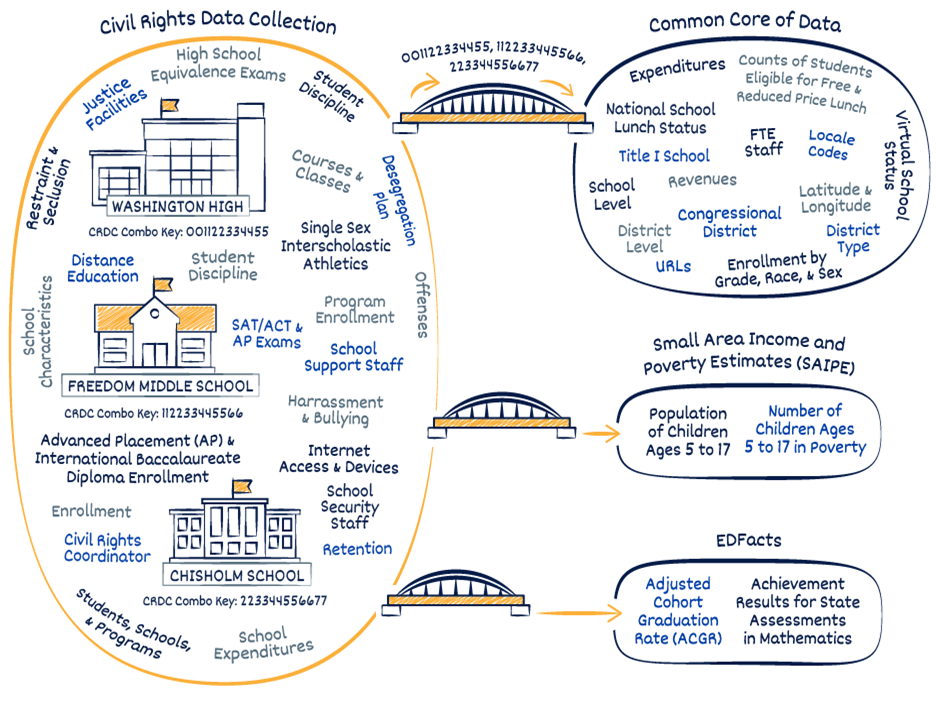On October 15, 2020, the U.S. Department of Education’s (ED) Office for Civil Rights (OCR) released the 2017–18 Civil Rights Data Collection (CRDC). The CRDC is a biennial survey that has been conducted by ED to collect data on key education and civil rights issues in our nation’s public schools since 1968. The CRDC provides data on student enrollment and educational programs and services, most of which are disaggregated by students’ race/ethnicity, sex, limited English proficiency designation, and disability status. The CRDC is an important aspect of the overall strategy of ED’s Office for Civil Rights (OCR) to administer and enforce civil rights statutes that apply to U.S. public schools. The information collected through the CRDC is also used by other ED offices as well as by policymakers and researchers outside of ED.
As a standalone data collection, the CRDC provides a wealth of information. However, the analytic power and scope of the CRDC can be enhanced by linking it to other ED and government data collections, including the following:
A Crosswalk to Link CRDC Data to Other Data Collections
To facilitate joining CRDC data to these and other data collections, NCES developed an ID crosswalk. This crosswalk is necessary because there are instances when the CRDC school ID number (referred to as a combo key) does not match the NCES school ID number assigned in other data collections (see the “Mismatches Between ID Numbers” section below for reasons why this may occur). By linking the CRDC to other data collections, researchers can answer questions that CRDC data alone cannot, such as the following:

Mismatches Between ID Numbers
Mismatches between CRDC combo key numbers and NCES ID numbers may occur because of differences in how schools and districts are reported in the CRDC and other collections and because of differences in the timing of collections. Below are some examples.
- Differences in how schools and school districts are reported in the CRDC and other data collections:
- New York City Public Schools is reported as a single district in the CRDC but as multiple districts (with one supervisory union and 33 components of the supervisory union) in other data collections. Thus, the district will have one combo key in the CRDC but multiple ID numbers in other data collections.
- Sometimes charter schools are reported differently in the CRDC compared with other data collections. For example, some charter schools in California are reported as independent (with each school serving as its own school district) in the CRDC but as a single combined school district in other data collections. Thus, each school will have its own combo key in the CRDC, but there will be one ID number for the combined district in other data collections.
- There are differences between how a state or school district defines a school compared with how other data collections define a school.
- Differences in the timing of the CRDC and other data collections:
- There is a lag between when the CRDC survey universe is planned and when the data collection begins. During this time, a new school may open. Since the school has not yet been assigned an ID number, it is reported in the CRDC as a new school.

Interested in using the ID crosswalk to link CRDC data with other data collections and explore a research question of your own? Visit https://www.air.org/project/research-evaluation-support-civil-rights-data-collection-crdc to learn more and access the crosswalk. For more information about the CRDC, visit https://ocrdata.ed.gov/.
By Jennifer Sable, AIR, and Stephanie R. Miller, NCES